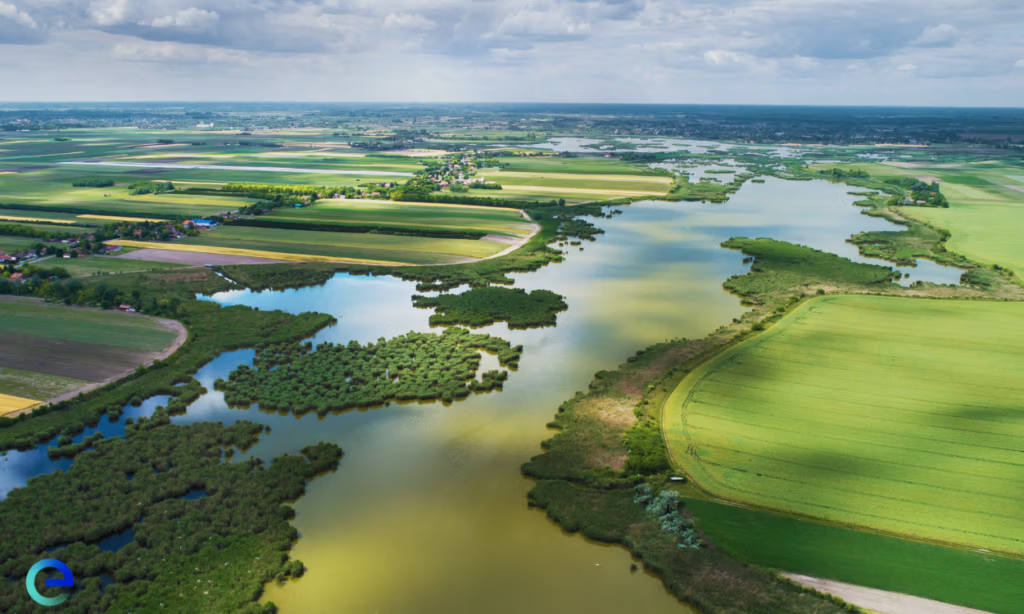
The UN Biodiversity Conference (COP16) stood out as a key moment in worldwide efforts to safeguard Earth’s biological diversity. This important conference brought together 196 countries to check progress on the Kunming-Montreal Global Biodiversity Framework and set up solid steps to put it into action. The conference showed an unmatched dedication from governments, companies, and native communities to tackle the growing biodiversity crisis.
The results of COP16 transform how we approach international biodiversity conservation through several main developments. The delegates moved forward with putting the 30×30 target for protected areas into practice, set up new ways to fund conservation projects, and boosted the role of native people in managing biodiversity. These changes point to big steps forward in meeting global biodiversity goals while making sure everyone has a fair chance to take part.
The current status of National Biodiversity Strategies and Action Plans (NBSAPs) reveals both progress and challenges:
The Global Biodiversity Framework Fund (GBFF) has emerged as a crucial financing mechanism, though current commitments fall short of targets. Canada and the UK have pledged USGBP 117.84 million and USGBP 9.82 million respectively, leaving a significant funding gap. The European Union has demonstrated additional commitment by doubling its external funding to €7 billion until 2027, with 20% allocated to Indigenous and local action and 36% supporting vulnerable communities.
The NBSAP Accelerator Partnership, launched in September 2023, represents an innovative approach to implementation support, facilitating matchmaking services and in-country facilitation. This partnership, co-chaired by Colombia and Germany, has attracted 21 country members and eight institutional members, demonstrating growing international collaboration in biodiversity conservation efforts.
The Protected Planet Report 2024, released at COP16, reveals significant gaps in achieving the ambitious 30×30 target established under the Kunming-Montreal Global Biodiversity Framework. This comprehensive assessment demonstrates the necessity for accelerated conservation efforts across terrestrial and marine ecosystems.
Current status of protected areas
Global protection coverage has reached 17.6% of terrestrial and inland waters, while marine and coastal areas stand at 8.4%. This represents modest progress from May 2021, when coverage was 16.64% for land and 7.74% for marine areas. Currently:
| Ecosystem Type | Current Protection | 2030 Target | Gap |
| Terrestrial/Inland | 17.6% | 30% | 12.4% |
| Marine/Coastal | 8.4% | 30% | 21.6% |
| Wetlands | 16.5% | 30% | 13.5% |
| Rivers/Streams | 18% | 30% | 12% |
Challenges in achieving the target
The implementation of the 30×30 target faces several critical obstacles:
Innovative approaches for conservation
Several clever tactics have cropped up to tackle these issues. Conservation options have broadened with Other Effective Area-based Conservation Measures (OECMs) joining the usual protected zones. This approach recognizes successful conservation efforts under various leadership philosophies, including those by local organizations and indigenous peoples.
The way it is put this into action focuses on representing the ecosystem and keeping connections between conservation areas instead of just hitting target percentages. By doing this, the strategy safeguard zones with many different plants and animals, while keeping pathways open that wildlife need to move around.
Regarding Indigenous Peoples and Local Communities (IPLCs), they are real game-changers when it comes to keeping nature in check. As it turns out, the areas that these individuals oversee can be just as verdant or even more so than the typical protected areas. Witnessing this in action has inspired a greater number of individuals to endorse the concept of IPLCs as the driving force behind environmental conservation and collaboration to ensure that it is executed correctly.
Role of public and private sectors
The public sector maintains a pivotal role in biodiversity conservation, with governments committing to redirect approximately GBP 392.82 billion of harmful subsidies by 2030. This redirection represents the largest potential contribution to closing the biodiversity finance gap agreed upon at previous COPs.
Private sector engagement has emerged through several key mechanisms:
New funding mechanisms proposed
The Tropical Forest Forever Facility (TFFF) represents a groundbreaking approach to conservation finance, designed to deliver GBP 3.14 billion annually to tropical nations for forest preservation. This innovative mechanism treats trees as valued shareholders, recognizing their essential ecosystem services.
The Global Biodiversity Framework Fund (GBFF) has approved 22 projects, primarily implemented in the Global South. However, access challenges persist, with only 18 out of 66 projects receiving approval in the second round of grants. This highlights the need for streamlined access mechanisms, particularly for developing countries and Indigenous communities.
Financial institutions are increasingly recognizing biodiversity loss as a material risk to their portfolios. The International Monetary Fund (IMF) has begun providing tailored support and macro-critical advice to members regarding biodiversity conservation and sustainable use. This represents a significant shift in how global financial institutions approach biodiversity risk management.
The emergence of biodiversity credits as a market mechanism has generated considerable debate. While these instruments aim to channel private investment toward conservation, concerns exist about their effectiveness and potential to commodify nature. Experts emphasize that such market-based solutions should complement, not replace, traditional regulatory approaches and public funding mechanisms.
Local Communities and Indigenous Peoples (IPLCs) stand out as key players in worldwide efforts to conserve biodiversity. Their lands hold more than 40% of Earth’s areas rich in different living species. At COP16, people went beyond just saying IPLCs mattered. They set up real ways for IPLCs to take part in saving our planet’s natural diversity.
Ensuring equitable benefit-sharing
The establishment of Indigenous-led funds represents a transformative approach to benefit-sharing mechanisms. Currently, IPLCs receive less than 1% of global environmental philanthropy, despite managing territories that contain approximately 80% of the world’s remaining biodiversity. The new funding architecture emphasizes:
The Global Biodiversity Framework Fund has implemented specific provisions ensuring that 20% of allocated funds support indigenous-led initiatives, marking a significant shift from previous funding models that often relegated indigenous communities to indirect beneficiaries.
Strengthening participation in decision-making
COP16 has set up new ways for indigenous people to take part in global biodiversity decisions. It has created a permanent group under the Convention on Biological Diversity to deal with IPLC involvement. This group focuses on three main areas:
The Expert Workshop on Traditional Knowledge Indicators, conducted in March 2024, brought together 30 Indigenous representatives to develop methodologies for monitoring traditional knowledge integration in conservation efforts. This workshop established frameworks for measuring indigenous contributions to biodiversity conservation through community-based monitoring systems.
Indigenous-led conservation initiatives have demonstrated remarkable success, with studies indicating that biodiversity levels in Indigenous-managed lands often exceed those in conventional protected areas. For instance, indigenous territories in the Amazon region maintain biodiversity rates 25% higher than adjacent areas under different management regimes.
The recognition of indigenous rights and knowledge systems extends beyond moral imperatives to practical conservation outcomes. Traditional knowledge indicators now serve as key metrics in the Global Biodiversity Framework’s monitoring system, enabling national governments to measure how indigenous practices impact conservation efforts. This integration represents a significant shift from previous approaches that often marginalized indigenous perspectives in conservation planning and implementation.
COP16 demonstrated substantial progress toward global biodiversity conservation goals through concrete actions and commitments. National governments have advanced their biodiversity strategies, with 34 countries submitting revised NBSAPs and 115 countries publishing updated targets. The establishment of robust monitoring frameworks, coupled with innovative financing mechanisms like the Global Biodiversity Framework Fund, signals growing international determination to protect Earth’s ecosystems. Indigenous peoples’ crucial role has received unequaled recognition, with support from specific funding sources and official participation mechanisms in conservation decision-making.
Meeting the ambitious targets set forth in the Kunming-Montreal Global Biodiversity Framework demands accelerated action and sustained commitment from all stakeholders. Success hinges on continued expansion of protected areas, strengthened indigenous partnerships, and scaled-up financial investments that match the magnitude of the biodiversity crisis facing our planet.
Get the knowledge you need to drive sustainable change. Subscribe to our EcoSkills Newsletter for timely updates on trends, innovations, and policies shaping the future of sustainability.
